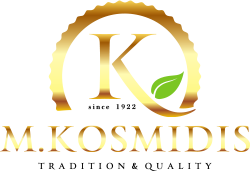Tahini ALLY OF FASTING AND NOT ONLY!
Authors: Papalazarou Anastasios, PhD
One of the foods that takes a leading role in our diet during the fasting period is tahini and halva. It is produced by special processing from sesame seeds and its nutritional value is significant.
Timeless value!
The value of Sesame is also reflected in the mythology of Assyrians, where according to this the gods drank sesame wine and made the world, while various subsequent myths associate it with immortality. In Greece, although it is not as prevalent as in other states, such as in M. East and in India where it is an integral part of their diet, in the last few years earns his place in our everyday table. Misunderstood we consume it only in fasting, while according to its nutritional value it should be consumed much more frequently and throughout the period of time.
Prefer it to….
The protein of the…
Tahini has many minus “honest” calories. 100 grams. they deliver 500 calories, but at the same time, they give us valuable nutrients. It is an important source of protein (especially during fasting periods) which, on its own, has no high biological value (like most plant-derived proteins). Combined with bread or legumes, as in the manufacture of humus (tahini + chickpeas), its biological value is upgraded, contributing significantly to the coverage of our protein needs.
… strong bones
At the same time, tahini is an ideal ally for good bone health. It gives us not only calcium, but also another trace element magnesium that together participate in the strong bone structure. Especially in the fasting period we are far from the main sources of calcium, dairy products, tahini together with nuts are the ideal alternatives.
… concentration and vitality
Tahini gives us vitamins B complex and mainly thiamine, B6 and folic acid contributing to the proper functioning of our nervous system. These vitamins are essential components of enzymatic systems involved in the metabolism of proteins, carbohydrate and fats.
Ally in anemia
At the same time tahini gives us another valuable ingredient for the proper functioning of our body, iron. In fact, in the period of fasting when meat is missing, adequate iron intake is considered essential. Iron contributes to the transport of oxygen to the tissues and thus function properly all our peripheral organs. Iron deficiency means that muscles will not have fuel to produce work and therefore fatigue occurs quickly. Similarly the brain will not oxygenate properly and undesirable situations such as weakness, dizziness or fainting can occur. Tahini together with legumes combined with vitamin C can with proper adjustment to fill the Iron gap from the main source of intake of meat.
And …” good ” heart
But tahini also contributes to the good health of the heart. The fats that form the base of its composition are mainly monounsaturated and polyunsaturated, while the dangerously saturated are minimal. Numerous studies have associated the intake of monounsaturated and polyunsaturated with a decrease in blood lipid levels, thus reducing the chances of developing cardiovascular diseases. In addition, tahini contains small quantities of valuable substances called phytosterols, and, as has been shown today can help to reduce cholesterol levels in the blood.








